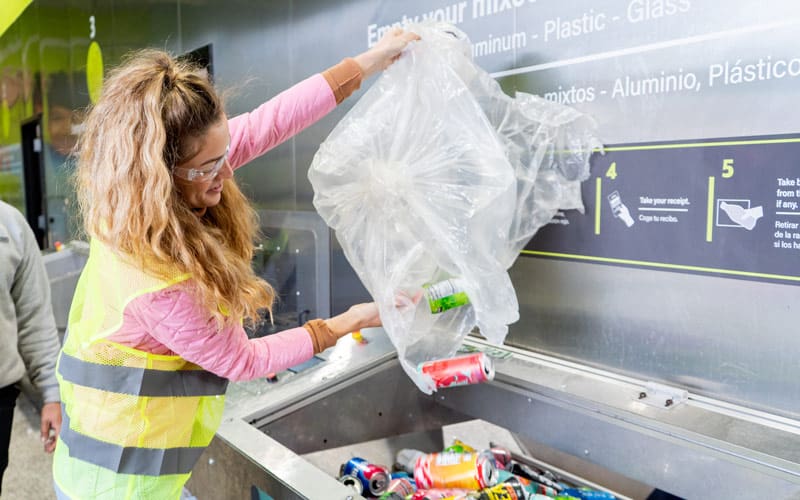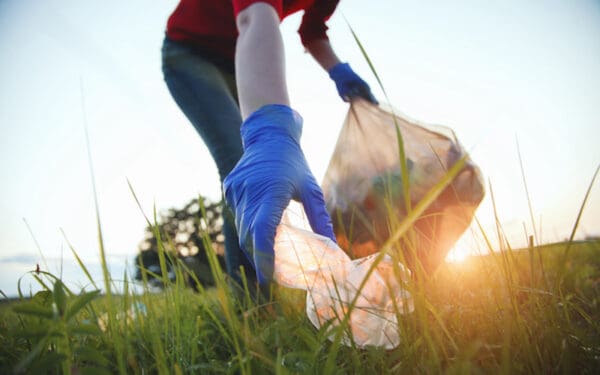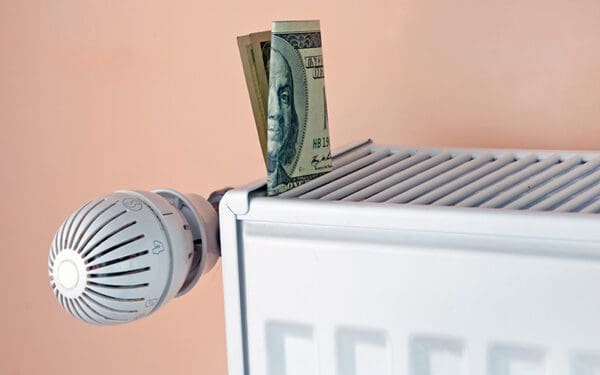
Despite industry claims that these systems are outdated and unnecessary, the truth is clear: Bottle bills work. Photo: Adilson González Morales.
In New England, our neighborhoods and beautiful landscapes face a growing problem: discarded beverage containers. From parks to waterways, these cans and bottles have become a regional invasive species – our very own “litter critters.” They aren’t just eyesores. They are an issue that bottle bills can help us solve.
What Are Bottle Bills?
Bottle bills place a small deposit on beverage containers. Consumers get that deposit back when they return the empty containers to a retailer or redemption center. This system encourages recycling while reducing litter and holding producers accountable for the lifecycle of their products. Despite these benefits, the waste and beverage industries argue that these programs are outdated or unnecessary.
But here’s the truth: bottle bills work. They offer a cost-effective solution to our litter problem and more. Let’s dispel some myths.
The Cost of Bottle Bills
There’s a persistent myth that bottle bills financially burden consumers and communities. The reality is these programs cost consumers nothing. The deposit is fully refundable when consumers return the container. It’s up to beverage producers to cover the costs associated with running the program, not taxpayers.
Bottle return laws can also help cities and communities save money. Modernized and well-run bottle deposit programs can save communities millions in waste management costs. For instance, updating Massachusetts’ bottle bill could save up to $36.5 million annually in garbage and recycling collection, tipping fees, and litter reduction programs. On top of that, modernized bottle bills would create hundreds of new jobs – in addition to the thousands of people already employed to run these programs across the region.
Complementing Curbside Recycling
While curbside recycling programs offer a good option for handling some materials, they have limitations, particularly with beverage containers. These programs often suffer from contamination – from food waste, grime, and other materials mixed in – which can make entire batches of goods unrecyclable. As a result, many of the items we put in the recycling bin end up in landfills or incinerators, creating even more pollution.
That’s where bottle bills step in. They complement curbside recycling by ensuring that beverage containers are returned clean and sorted, making them much more likely to be recycled. States with bottle return systems – like Maine and Vermont – recycle far more beverage containers (78% and 68% respectively). Their rates often double or triple that of the national average (25%).
Bottle Bills Help Reduce Harmful Pollution
More bottles and cans being recycled means fewer raw materials are extracted to produce new containers – that’s great news for the environment. Plastic production, for example, involves the extraction of petroleum – a dirty process that requires a lot of resources, pollutes our water, and releases toxic gases into our air.
On the disposal side, these systems are crucial in preventing containers from ending up in landfills and incinerators, where they continue to pollute. In landfills, plastic can leach harmful chemicals into the soil and groundwater. Incineration – which releases dangerous pollutants into our air – offers no better outcome.
By diverting glass and plastic containers from these harmful disposal methods, bottle bills help protect our air, water, and soil from contamination. That makes them a vital tool in our efforts to reduce pollution and safeguard public health.
It’s Prime Time for Action
The time to act on bottle bills is now. States like New Hampshire and Rhode Island are overdue to adopt these vital programs. Others – like Massachusetts, Vermont, and Connecticut – need to modernize their existing laws to reflect the reality of the products on our shelves today.
By supporting and expanding bottle bills, we can say goodbye to those “litter critters” and protect our region’s natural beauty. You can help, too. Contact your elected officials and urge them to pass a strong bottle bill in your state. Together, we can create a cleaner, greener New England for all.



